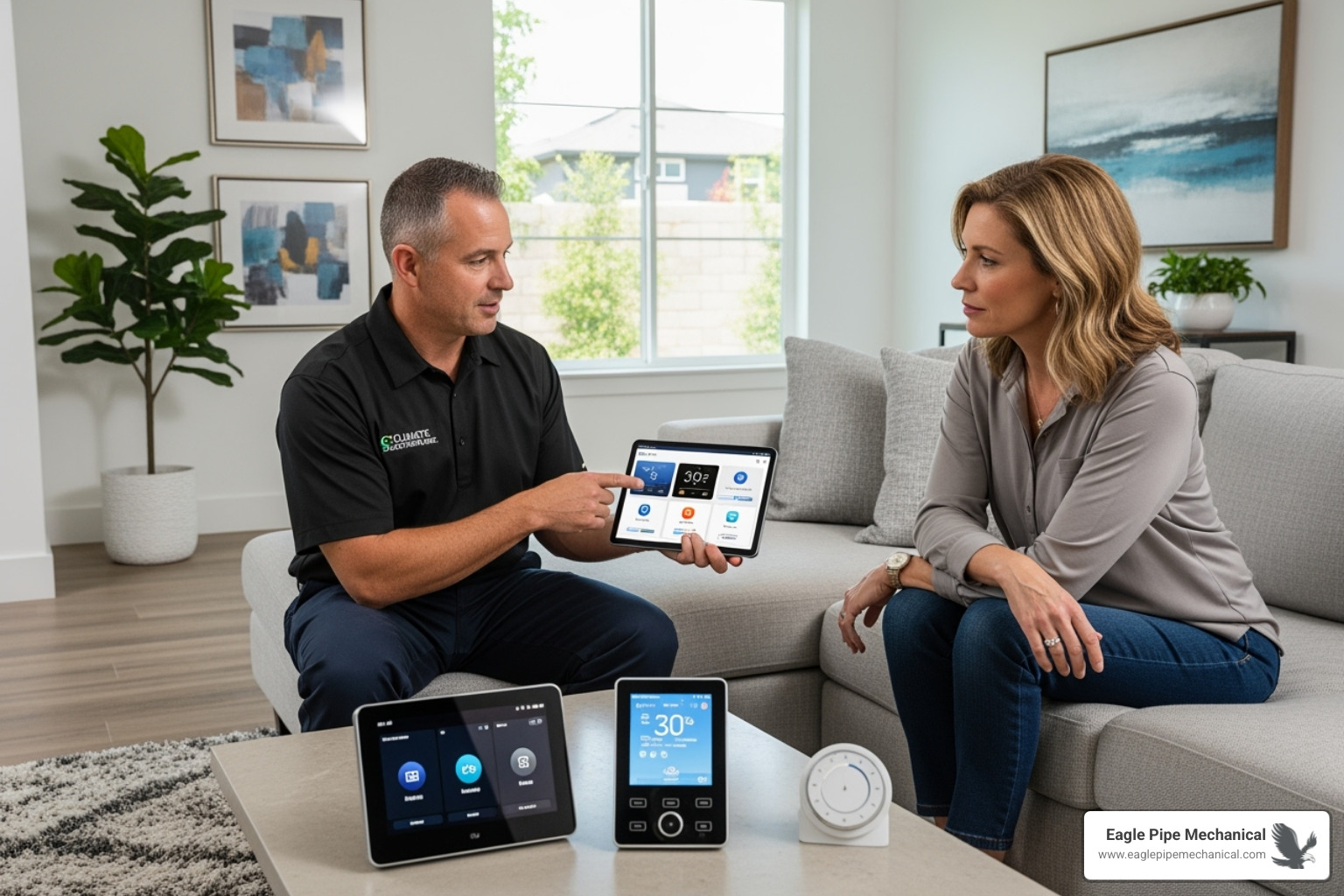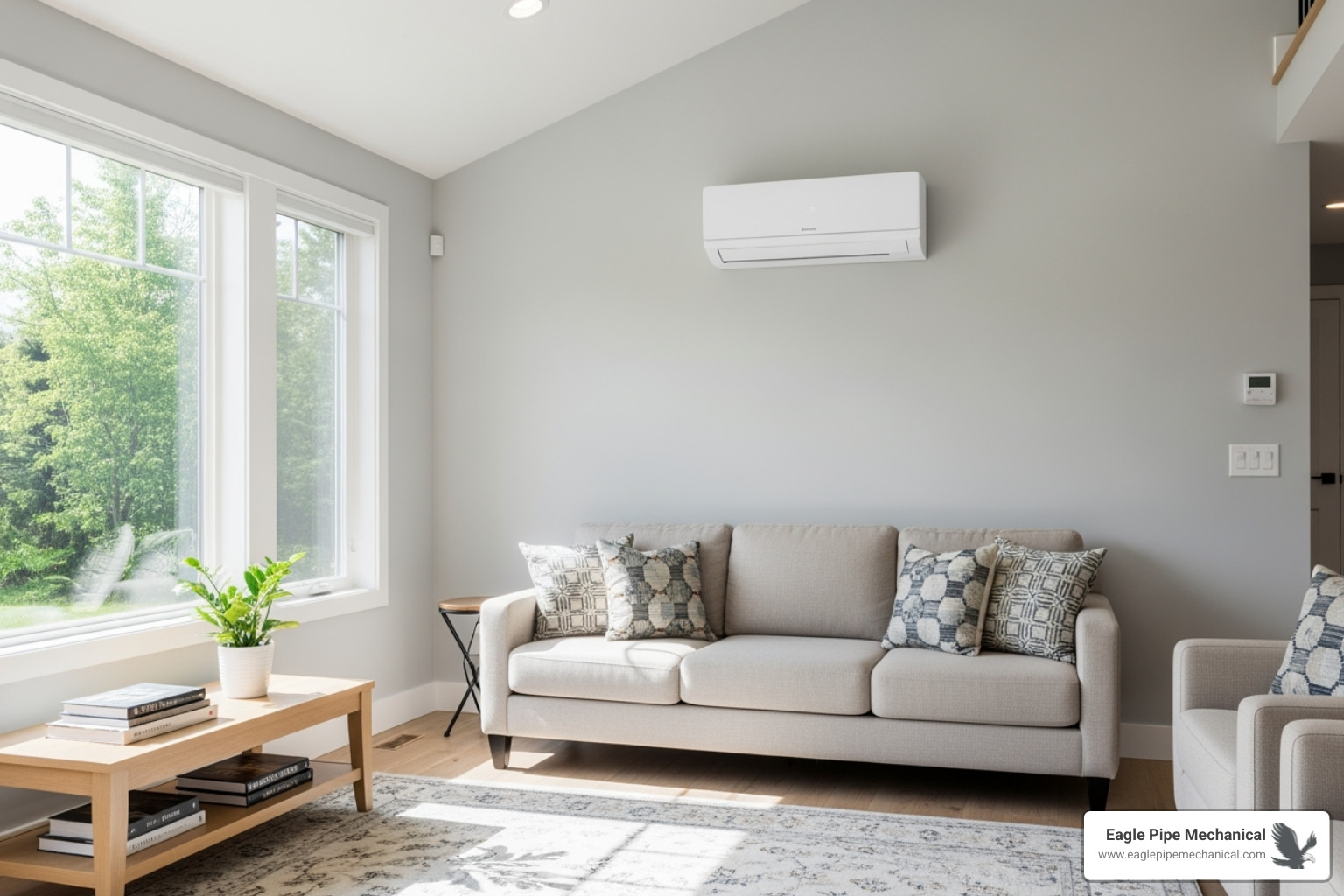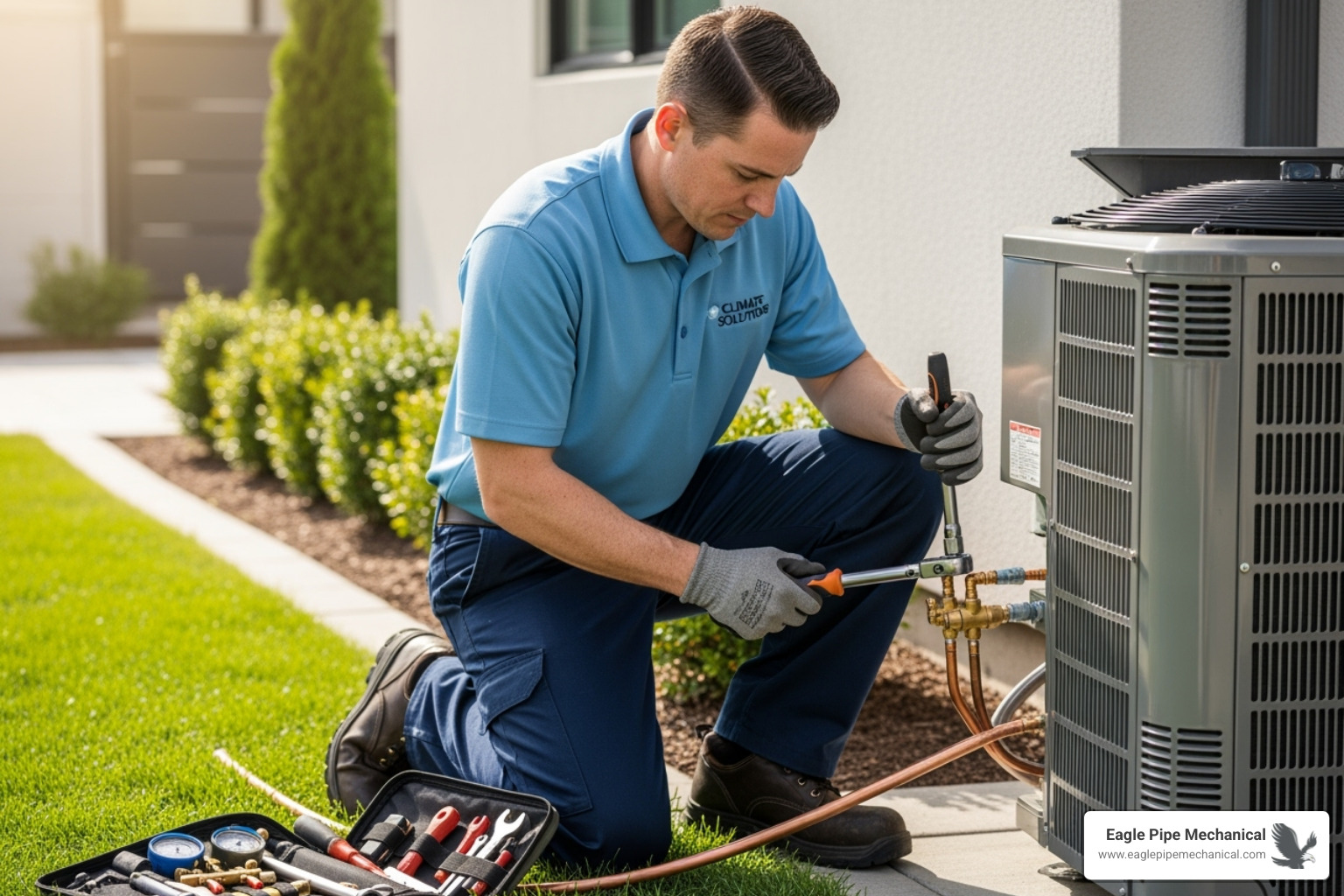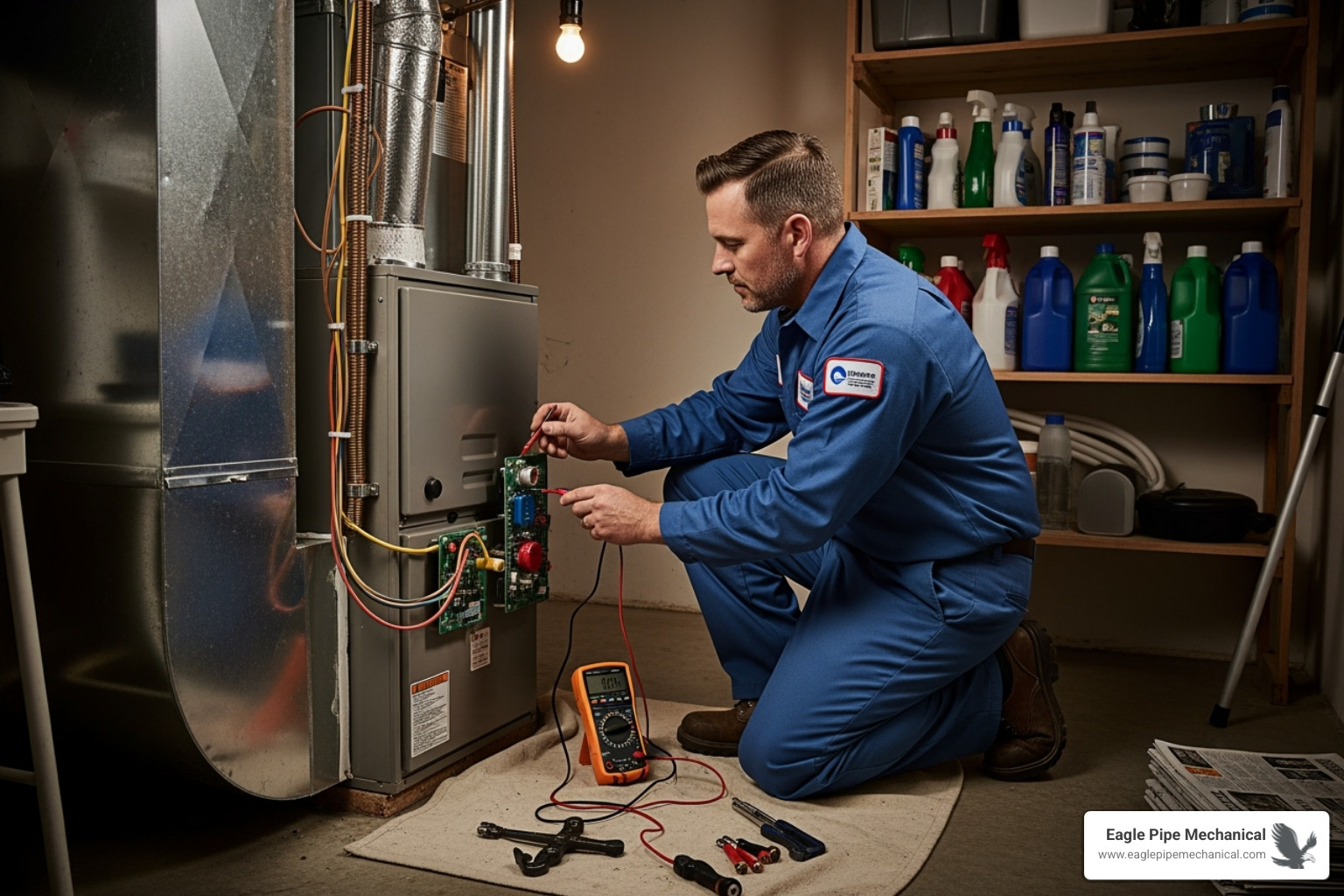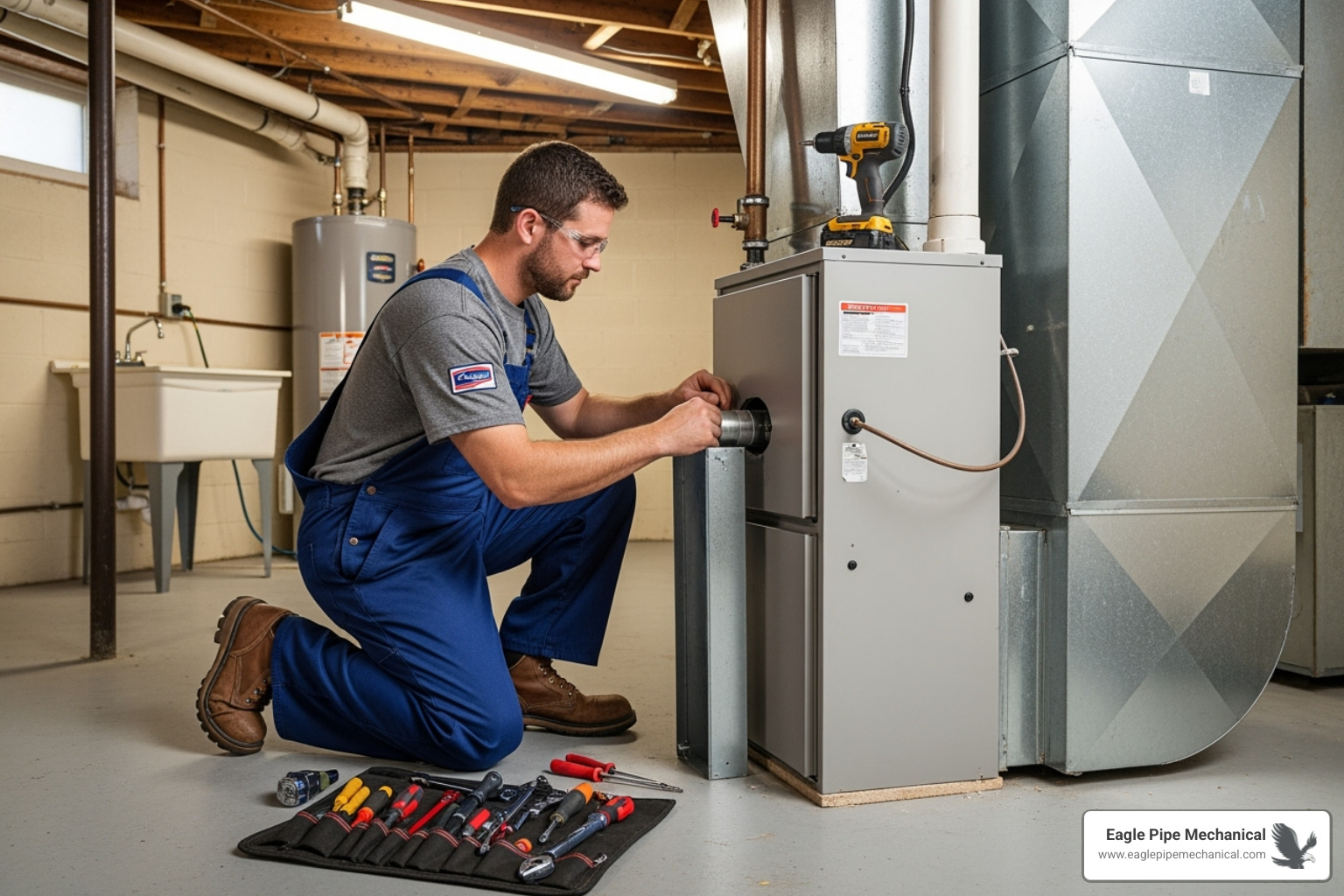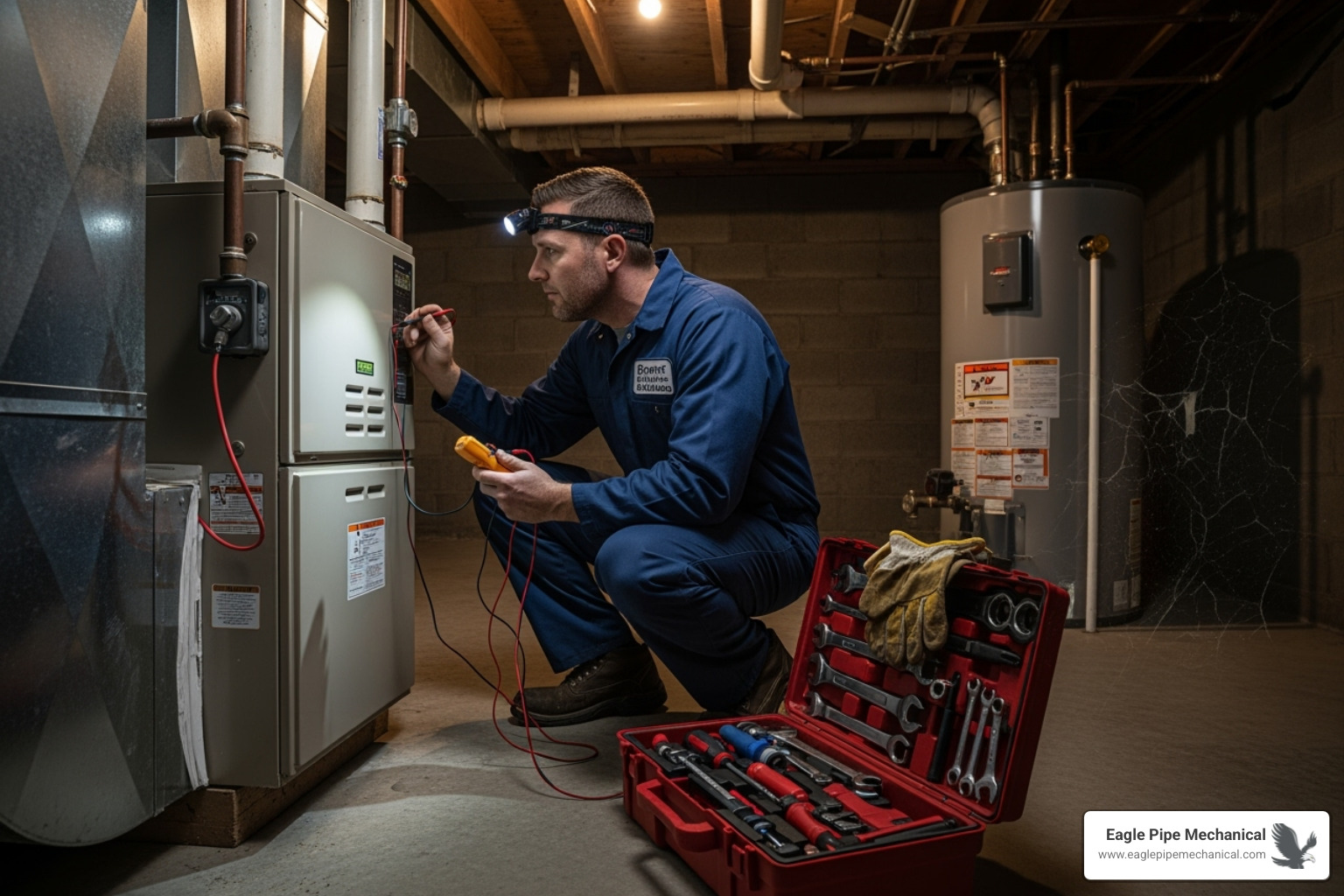Why Professional Heat Pump Installation Service Makes All the Difference
A professional heat pump installation service ensures your system operates efficiently, safely, and reliably for years to come. A quality installation includes a site assessment for proper sizing, expert connection of all components, thorough system testing, customer education, and protection of your manufacturer’s warranty.
Choosing the right heat pump and having it installed correctly can dramatically impact your home’s comfort and energy bills. Heat pumps can reduce electricity use by up to 50% compared to furnaces and baseboard heaters, providing both heating and cooling in a single, efficient system.
In Western Washington’s mild climate, modern heat pumps are an ideal year-round solution. They extract heat from outdoor air even in cold temperatures and reverse the process for summer cooling. However, maximizing these benefits requires proper installation by trained professionals who understand local climate conditions. A poorly installed system can lead to reduced efficiency, higher energy bills, frequent repairs, and premature failure, as the process involves complex electrical work, refrigerant handling, and precise system sizing.
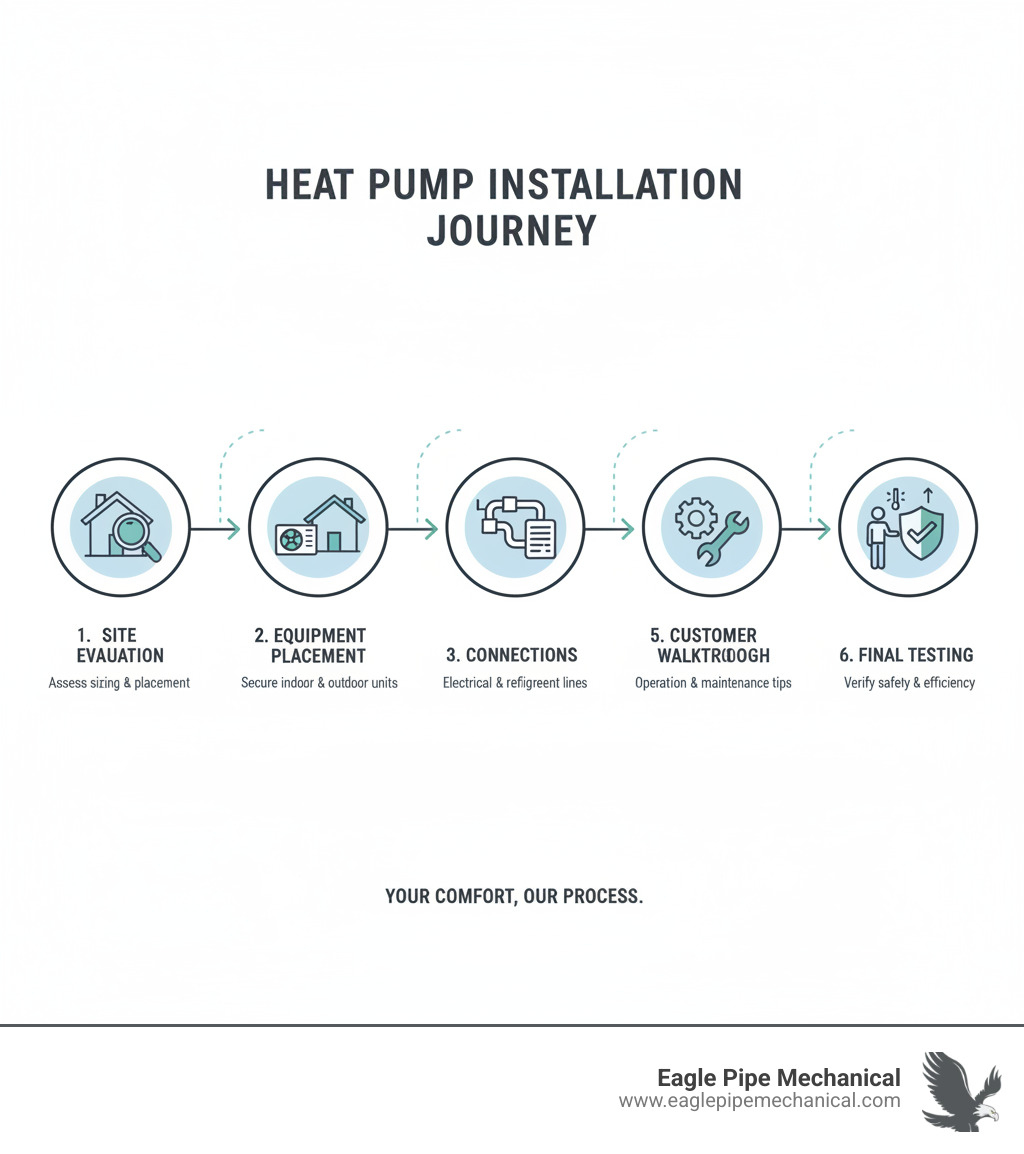
The All-in-One Comfort Solution: Why a Heat Pump is a Smart Investment
Imagine one system that keeps your home cozy in the winter and cool in the summer, all while cutting your energy bills. That’s what a heat pump delivers. Instead of separate heating and cooling systems, you get year-round performance from a single, efficient unit that can slash electricity use by up to 50% compared to traditional furnaces and baseboard heaters.
Heat pumps work smarter, not harder. By moving heat instead of creating it, they provide consistent temperatures throughout your home with a reduced carbon footprint. For homeowners considering this upgrade, you can explore more about Heat Pump Installation Benefits and find out Why Choose a Heat Pump? for your home.
How a Heat Pump Works
Heat pumps don’t generate heat; they are thermal transporters. Using a refrigerant cycle, they move heat energy from one location to another.
In winter, the outdoor unit extracts heat from the outside air—even when it’s cold. A special refrigerant absorbs this heat, is compressed to raise its temperature, and then travels indoors to release warmth into your home. In summer, a reversing valve flips the process. The system collects heat from inside your house and moves it outside, providing effective cooling in summer just like a traditional air conditioner. This continuous cycle of heating in winter and cooling in summer makes them incredibly versatile.
Key Benefits for Your Home
The advantages of a heat pump extend beyond temperature control. Reduced electricity use leads to lower monthly bills, making a real difference in your budget. Having a single system for heating and AC simplifies maintenance and frees up space.
Many modern heat pumps also offer improved indoor air quality through advanced filtration systems that remove dust and allergens. Most importantly, this is eco-friendly technology. By transferring heat rather than burning fossil fuels, heat pumps dramatically reduce your home’s environmental impact. A professional heat pump installation service is an investment in both your family’s comfort and the planet’s future.
Selecting Your Perfect Match: How to Choose the Right Heat Pump
Finding the right heat pump requires matching the system to your home’s unique needs, local climate, and budget. There’s no one-size-fits-all solution when it comes to heat pump installation service, but with a little guidance, you can make a confident choice.
We’ll walk you through the key factors, from understanding efficiency ratings to deciding between a ducted or ductless system, so you can make an informed decision that ensures your comfort for years to come.
Understanding Efficiency: SEER and HSPF Ratings Explained
When shopping for heat pumps, you’ll see two key efficiency ratings: SEER (Seasonal Energy Efficiency Ratio) for cooling and HSPF (Heating Seasonal Performance Factor) for heating. The higher the number, the more efficiently the system uses energy, which translates directly to lower utility bills. Look for Energy Star certification to identify models that meet strict efficiency standards and may qualify for rebates, balancing upfront cost with long-term savings.
Sizing is Everything: Why a Professional Load Calculation Matters
Proper sizing is critical for performance and comfort. An oversized system will cycle on and off too frequently, failing to dehumidify your home and causing premature wear. An undersized system will run constantly without being able to keep up, leading to high energy bills and discomfort. That’s why we perform a professional Manual J calculation, a detailed assessment of your home’s square footage, insulation, windows, and local climate data to ensure your new heat pump is perfectly matched to your home’s needs.
Ducted vs. Ductless (Mini-Splits): What’s Right for You?
If your home has existing ductwork, a ducted heat pump is often a straightforward choice, though we always inspect ducts for leaks or sizing issues that could impact efficiency. Ductless mini-split systems offer incredible flexibility, especially for homes without ducts or for targeted comfort. They use an outdoor unit connected to sleek indoor units, allowing for zone control to set different temperatures in different rooms. Mini-splits are perfect for additions, converted garages, or any space where running new ductwork is impractical.
Are Heat Pumps Suitable for the Washington Climate?
Yes! Heat pumps are ideal for Western Washington’s climate, especially in our service areas around Poulsbo, Bainbridge Island, and Kingston. Our region’s mild winters and moderate summers are perfect for heat pump operation. Modern heat pumps are engineered to work efficiently well below freezing, providing reliable warmth throughout our typical winters. For summer, they provide excellent air conditioning, removing both heat and humidity. This dual capability makes them a practical and efficient choice for our climate. For local homeowners, we offer specialized services in Heat Pump Installation in Poulsbo, WA and Heat Pump Installation in Bainbridge Island, WA.
The Professional Heat Pump Installation Service: A Step-by-Step Guide
A professional heat pump installation service is the difference between a system that works beautifully for decades and one that causes endless headaches. At Eagle Pipe Mechanical, we’ve refined our process to ensure your heat pump operates efficiently and reliably from day one.
The process requires specialized knowledge of refrigeration, electrical codes, and local requirements. We follow a proven three-step process that leaves nothing to chance. Learn more about our commitment at Expert Heat Pump Installation Services.
Step 1: The Initial Consultation and Home Assessment
Every great installation starts with understanding your specific needs. Our initial consultation involves evaluating your comfort goals, inspecting any existing ductwork for leaks or sizing issues, and performing a professional load calculation (Manual J method). This scientific assessment considers your home’s size, insulation, windows, and other factors to determine the exact heating and cooling capacity you need. Based on this, we provide system recommendations custom to your home and budget, along with a clear, upfront quote.
Step 2: The Core Heat Pump Installation Service Process
On installation day, our skilled technicians execute the plan with precision. This phase includes proper placement of the outdoor unit on a level pad with adequate clearance for airflow. We then handle the installation of indoor units, whether it’s an air handler for a ducted system or wall-mounted units for a mini-split. The most critical work is securely connecting refrigerant and electrical lines according to manufacturer specifications and local codes. We also ensure proper drainage is established to prevent water damage and mold.
Step 3: System Calibration, Testing, and Final Walkthrough
The job isn’t done until we’ve verified perfect performance. We start by verifying airflow and checking refrigerant levels to ensure they match manufacturer specifications precisely. Next, we calibrate the thermostat and test the system through full heating and cooling cycles to confirm everything operates correctly. The final, crucial step is explaining system operation to you. We walk you through the controls, provide maintenance tips, and answer all your questions, ensuring you feel completely confident with your new heat pump. For more on why this matters, see Crucial Expert Heat Pump Installation.
Long-Term Care: Maintaining and Replacing Your System
With proper care, a heat pump in our Western Washington climate can last 15 to 18 years. This lifespan depends heavily on the quality of the initial heat pump installation service and consistent maintenance. Just like a car, your heat pump needs regular attention to run efficiently and avoid unexpected breakdowns. Knowing the signs of aging and the importance of maintenance can save you from emergency repairs. For more guidance, see our resource on When to Replace Your Heat Pump.
Signs Your Heat Pump Needs Replacement
Catching warning signs early gives you time to plan for a replacement. Be on the lookout for these red flags:
- System age of 15+ years, as efficiency declines and breakdown risk increases.
- Frequent or costly repairs that approach the cost of a new unit.
- Rising energy bills that indicate a loss of efficiency.
- Strange sounds like grinding or squealing, or musty smells.
- Inconsistent temperatures and an inability to keep your home comfortable.
Our guide on Heat Pump Replacement Signs offers more detail.
The Importance of Regular Maintenance
Regular professional maintenance is the secret to getting the most from your heat pump. During a service visit, our technicians perform critical tasks like cleaning coils, checking refrigerant levels, inspecting electrical components, lubricating moving parts, and ensuring proper drainage. We also check your air filters and test the thermostat.
We recommend service twice a year—once before cooling season and once before heating season. At a minimum, annual service is essential to maximize your system’s lifespan, maintain peak efficiency, and keep your manufacturer warranty valid. This proactive approach helps you avoid surprise repair calls when you need your system most. Learn more at Regular Heat Pump Maintenance.
Understanding the Investment: Costs, Rebates, and Finding a Pro
Investing in a heat pump installation service is a significant decision, but it’s one that typically pays for itself through energy savings. While there is an upfront cost, rebates and incentives can often make it more manageable. You’re not just buying a heating and cooling system; you’re investing in long-term comfort, lower energy bills, and increased home value.
What are the Costs Associated with Heat Pump Installation?
The total cost of a heat pump installation varies, as every home is unique. The primary factors include:
- Unit type, size, and efficiency: High-efficiency models cost more upfront but deliver greater long-term savings.
- Labor costs: These depend on the complexity of the job, from a simple replacement to a more involved installation.
- Ductwork modifications: If your existing ducts need sealing, repairs, or resizing, this will affect the cost. Ductless systems avoid this expense.
- Additional upgrades: Many homeowners opt for a smart thermostat or require electrical upgrades to meet code.
We provide a detailed, transparent quote so you know exactly what to expect.
Open uping Savings: Rebates and Tax Credits
Several incentives can reduce the cost of your new heat pump. Federal tax credits are often available for high-efficiency models, providing significant savings. Additionally, local utility rebates in Kitsap and Jefferson Counties offer cash back for upgrading to energy-efficient systems. We stay current on all available manufacturer promotions and utility programs and will help you identify and apply for every incentive you qualify for. While programs vary, you can review examples of government incentives like this one to understand how they work.
What to Look for in a Heat Pump Installation Company
Choosing the right contractor is critical. A great heat pump installed poorly will never perform as it should. Look for a company that is:
- Licensed and insured: This is non-negotiable for your protection.
- Experienced locally: A contractor who understands Western Washington’s climate and building codes will provide a better installation.
- Well-reviewed: Check online reviews and ask for references to gauge customer satisfaction.
- Offers strong warranties: A company should stand behind both its equipment and its workmanship.
- Employs certified technicians: NATE certification ensures technicians have specialized, up-to-date knowledge.
- Customer-focused: Choose a team that listens to your needs and prioritizes your satisfaction.
Frequently Asked Questions about Heat Pump Installation
We get a lot of questions from homeowners about heat pump installation. Here are answers to some of the most common ones.
Are heat pumps noisy?
Modern heat pumps are surprisingly quiet. Thanks to variable-speed compressors and advanced fan designs, an outdoor unit typically operates at 50-60 decibels—about as loud as a normal conversation or a refrigerator. Indoor units are even quieter. Proper placement during your heat pump installation service also helps minimize sound, which is another reason professional installation is so important.
Can a heat pump be installed with my existing ductwork?
Yes, in most cases, a new heat pump can connect to your existing ductwork. This is often the most cost-effective option for homes with a forced-air furnace. However, we always perform a thorough inspection first. Leaky, undersized, or poorly insulated ducts can severely reduce your new system’s efficiency. If needed, we’ll recommend sealing or repairs to ensure optimal performance and airflow.
How long does a typical installation take?
Most standard heat pump installation service projects are completed in 4 to 8 hours. The exact timeline depends on several factors, including system complexity (e.g., a single mini-split vs. a multi-zone ducted system), any ductwork requirements, and whether electrical upgrades are needed. We provide a clear timeline during our initial consultation so you know what to expect on installation day.
Conclusion: Your Next Step to Year-Round Comfort
We’ve covered how heat pumps offer an all-in-one solution for heating and cooling, providing significant energy savings, improved comfort, and a reduced carbon footprint. This is especially true in our Pacific Northwest climate.
However, the key takeaway is this: the quality of the heat pump installation service determines the performance of your system. From the initial sizing calculation to the final calibration, every step must be done correctly by a trained professional. A poor installation will negate the benefits of even the best equipment.
Modern heat pumps are perfectly suited for the mild winters and moderate summers in Kitsap and Jefferson Counties. Whether you’re in Poulsbo or on Bainbridge Island, a properly installed heat pump will keep you comfortable all year.
For homeowners in Kitsap and Jefferson Counties, the expert team at Eagle Pipe Mechanical provides trusted, high-quality installations. We understand the local climate and what it takes to ensure your home becomes the comfortable, efficient haven you deserve.
Ready to take the next step? Don’t wait for the next heat wave or cold snap. Schedule your expert heat pump service in Poulsbo, WA today! Your future self will thank you.

